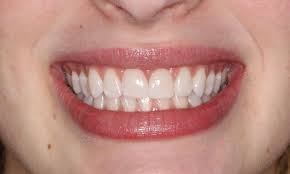The use of laser technology in dentistry has brought about a major shift in the way oral health care is delivered. One particular area that has seen significant advancements is gum surgery, specifically with gingivectomy vs gingivoplasty procedures.
In this article, we will delve into the differences and benefits of each dental procedure, and how they contribute to the overall improvement of dental treatments.
Gingivectomy vs Gingivoplasty: Understanding the Basics
Let’s start by defining what each procedure entails. Both gingivectomy and gingivoplasty are types of gum contouring surgeries, which aim to reshape or remove excess gum tissue for improved aesthetics and oral health.
What Is Gum Contouring?
Gum contouring, also known as gum reshaping or tissue sculpting, is a cosmetic dental procedure that involves the removal of gum tissue to expose more of the teeth. This can be done for various reasons, such as correcting a “gummy smile” or uneven gum line. You can also consult an expert for more info on “What is gum contouring?”
Gingivectomy
Gingivectomy is a surgical procedure that involves the removal of diseased or excess gum tissue. It is typically used to treat periodontal disease. Let’s take a closer look at this procedure:
Definition
Gingivectomy is derived from the Latin word “gingiva,” meaning gum, and “ectomia,” meaning excision. It means the removal of gum tissue.
Procedure
During a gingivectomy, a dental professional such as a dentist or periodontist will carefully employ a precise scalpel to gently remove any excess gum tissue. They will skillfully shape the remaining tissue to enhance both aesthetics and oral health. In some cases, a laser may be used instead of a scalpel.
Indications
Patients with gum disease are most often treated with gingivectomy. This disease is caused by a bacterial Infection of the gum tissue. Inflammation and potential damage may happen as a result.
Gingivectomy removes the infected tissue so the gums can heal and reattach to the teeth. This promotes general oral health and well-being. To restore the gum’s integrity and stop further problems related to periodontal disease, this surgery is a necessary step.
Gingivoplasty
Gingivoplasty is also a surgical procedure that aims to reshape the gum tissue. However, unlike gingivectomy, it is not used to remove diseased tissue but rather to improve the appearance of healthy gums.
Definition
The term “plasty” comes from the Greek word “plassein,” meaning shape or mold. Gingivoplasty means shaping or molding the gum tissue.
Procedure
Similar to a gingivectomy, a gingivoplasty may be performed with a scalpel or laser. The dentist will reshape the gum tissue to create a more symmetrical and aesthetically pleasing gum line.
Indications
Gingivoplasty is a dental procedure primarily used for cosmetic purposes. It involves reshaping the gum tissue to correct an uneven gum line or address a “gummy smile.”
By carefully sculpting and contouring the gums, gingivoplasty aims to enhance the overall appearance of the smile. This creates a harmonious balance between the teeth and gums for a more aesthetically pleasing result.
This procedure is often performed by skilled dental professionals who specialize in periodontics. This ensures optimal precision and natural-looking outcomes.
Benefits of Gingival Surgery
While both procedures have similar outcomes in terms of improved gum health and aesthetics, there are some key differences to consider when deciding between gingivectomy vs gingivoplasty.
Benefits of Gingivectomy
Gingivectomy is a good way to treat serious gum disease and lower the risk of further complications. Deep periodontal pockets can be removed by cutting away extra gum tissue.
This makes it easier to clean your teeth and keep up good oral health. In addition, this treatment helps stop tooth loss and gum recession.
Benefits of Gingivoplasty
When compared to gingivectomy, gingivoplasty is less invasive. This means that there is less pain after surgery and faster healing time. It is also a more conservative approach and can be used for small gum problems without having to remove too much tissue.
Evolutionary Trends and Considerations
With the advancements in technology and techniques, both gingivectomy and gingivoplasty have evolved to become more precise and less invasive. Here are some important considerations to keep in mind:
Minimally Invasive Techniques
Advanced laser technology has made it possible to replace scalpels and do both procedures comfortably. By using lasers, dentists can get the most accurate results with the least amount of damage. This state-of-the-art method cuts down on pain, swelling, and bleeding during and after the procedure.
Personalized Treatment Plans
Digital images and computer-assisted planning have made it possible for dentists to make treatment plans that are very specific to each patient. They think about what their specific dental needs and wants are.
This new method guarantees more accurate results. However, it also gives a full picture of what is likely to happen.
This lets the dentist and customer talk to each other and work together better. With these cutting-edge tools, dentistry is entering a new age of precision and care that is focused on the patient.
Enhanced Healing and Recovery
Platelet-rich plasma (PRP) therapy and other new techniques can be used during gum surgeries to help patients heal and get back to normal faster. PRP contains growth factors that help tissues regenerate and heal faster.
Using advanced technology, like lasers, also helps patients heal faster and more comfortably. Less damage to the tissues and better precision all lead to better outcomes after surgery.
Combined Approaches
It is sometimes possible to get the best results by using both gingivectomy and gingivoplasty procedures together. When treating someone with gum disease, for example, the first step might be to remove the infected tissue with a gingivectomy.
This is then followed by a gingivoplasty to make the gums more aesthetically pleasing. This thorough method makes sure that not only is diseased tissue removed, but also that the gums are shaped in a way that looks good. This leads to better oral health and a better smile overall.
Making an Informed Decision with this Guide
Gingivectomy vs gingivoplasty are both valuable procedures in the world of gum surgery. Whether it’s for health reasons or cosmetic purposes, these procedures have evolved to become more efficient and less invasive.
It is important to consult with a qualified dentist or periodontist to determine which procedure is best suited for your individual needs. With proper care and maintenance, these procedures can significantly contribute to improved gum health and overall oral well-being.
Is this article helpful? Keep reading our blog for more.






Add comment